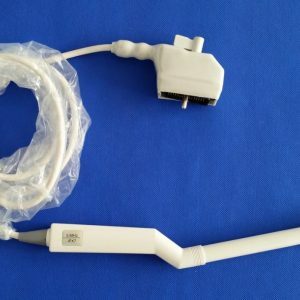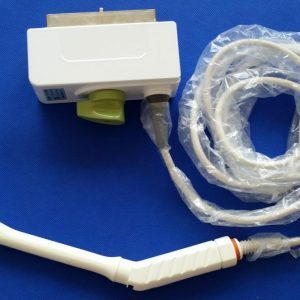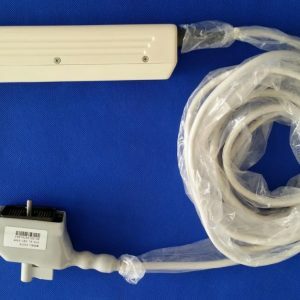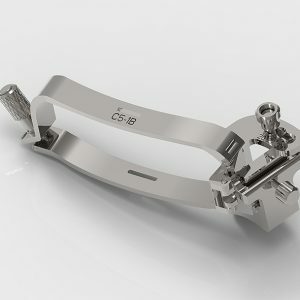If you’re looking to buy a vein detector, you’re in the right place. In this article, we’ll talk about variations in image quality, cost, portability, and features. There’s a vein finder out there for every budget, so there’s no reason not to spend a little more than you’re willing to spend. Read on to learn more. You’ll be glad you did! And remember, you’ll never need to worry about buying the wrong one again.丨vein detector price
Variations in image quality丨vein detector price
The variations in vein detector image quality are not easily understood because the final users are human beings. Among the methods used for image quality assessment, subjective analysis, which relies on the visual system of humans, is the most credible. Human viewers evaluate image quality by giving their “mean opinion scores”. However, subjective assessment is not always accurate because of the conditions under which the images are viewed. Therefore, objective assessment is preferred. The contrast between veins and skin tissue is difficult to determine fairly by human visual systems. Thus, an algorithm for vein detection is used to obtain an objective assessment observation.
The most common method for measuring vein diameter (VD) is to extract the grey profiles orthogonal to the vein lines from the raw image. In this method, the grey levels of vein lines are lower than those of non-vein areas. When this method is applied to a vein image, a “vein section” will form valleys on the gray level function. The deepest valley will be the one closest to the vein direction. The image can be further analyzed by comparing the corresponding grey profiles.
In order to improve the quality of the image from vein finders, the device must be equipped with an infrared-sensitive camera. A camera with this feature has a higher resolution than a VGA camera, and is better able to distinguish veins under the skin’s surface. However, this method is not widely used because of its high cost. In addition to these disadvantages, the transilluminating devices offer better contrast between the veins and the skin.
This technique is based on eight directional profiles of the grey image. It helps reduce the error due to non-uniform illumination of the finger area. Furthermore, it uses adaptive algorithms to determine the best Gabor filter direction and width. The resulting image is then analyzed using morphological operations to obtain a high-quality image of the veins. This technique also provides high-quality finger vein images. If you are interested in improving the accuracy of vein images, it is worth reading on the article.丨vein detector price

Cost丨vein detector price
If you are planning on purchasing a vein detector for your practice, it is important to consider the cost of the device before purchasing it. Many vein finders use battery power, but it is important to consider if it can be recharged. A rechargeable device is more cost-effective and does not need to be replaced frequently. These tools can be easily carried around in your medical bag. The cost of a vein detector can range from a few hundred to several thousand dollars, depending on the type you’re interested in purchasing.
The cost of a vein detector is usually dependent on the functionality of the device and the type of technology that will be used. For example, a basic prototype vein finder consists of a high-power NIR-LED light source, an infrared-sensitive camera, and a filter. However, researchers have added other components, including a Digital Light Processing (DLP) projector, which projects the image of the vein onto the surface of the skin.
The near-infrared region of the electromagnetic spectrum is becoming a popular vein finder technology. The cost of commercial vein finders ranges from four hundred to two thousand dollars for a portable unit and over two thousand dollars for a larger non-portable unit. Many medical practitioners face challenges while performing venipuncture and IV drug delivery because of small and deep veins. A vein may be difficult to see due to age, skin color, and body weight.
Some of the best options for vein detection are battery-powered and lightweight. You can move the vein finder from room to room in the NICU or the maternity unit. A vein detector that can be used by just one person is an excellent choice for pediatric practice, as it doesn’t require a trained medical staff member to operate it. These vein finders are not cheap, however, and you should consider how much it will cost before purchasing one.
A good option for those with a tight budget is a portable model. The Illumivein Premium Vein Finder has a small flashlight-like body and a red LED. A nylon wrist strap makes it easy to carry around. If you are unsure, a refund guarantee will be included if the device does not work. You can also get a free pediatric adapter. One last consideration to consider when buying a vein finder is the price.丨vein detector price

Portability丨vein detector price
The portability of vein detectors is a critical factor to consider when developing a new product. The basic prototype of a vein finder consists of an infrared-sensitive camera and a high-power NIR-LED light source. A second component, a Digital Light Processing (DLP) projector, is used to display the vein image on the skin surface. These features are essential to the overall effectiveness of the device.
An ultrasound device is also available. Its capability to visualize veins helps medical personnel in selecting the correct blood vessel, thereby preventing the wrong injections. It is also designed to be completely non-contact, reducing the risk of contamination during venous transfusion. Additionally, its portability allows the device to be used with different types of patients, including infants and elderly patients. The device is also designed to allow for movement of the patient, reducing the risk of unnecessary injections and increasing overall work efficiency.
This study was conducted with the aim of gaining a thorough understanding of the core concept of vein visualization. By defining a fundamental concept, this device can be used in primary care centers and hospitals. The results of this research may contribute to the development of a low-cost vein visualization device. It is a promising development for the future of health care. So what is the next step for vein visualizers? A new research study is underway to investigate the feasibility of such a device.
The study was carried out on 43 trainee clinicians and a prototype. The study methodology was conducted from September to December 2013 and revised in February 2014. The initial step was to gain a deeper understanding of the peripheral vein access and venipuncture challenges in the context of portability. It is important to keep in mind that the portability of a vein finder largely depends on the medical practitioner’s skills and experience, but the results are promising for future use.
Low-cost vein finders are increasingly becoming a reality. A small, portable device with an infrared light source is a low-cost, portable vein detector for clinical use. In India alone, 31.7 million people have diabetes, and this number is projected to rise by 30% by 2030. The technology has improved tremendously since the early days of the field. The next step is improving its affordability and portability. If we continue to improve the technology and develop better vein detection devices, the world will be a healthier place for everyone.

Features丨vein detector price
A vein detector is a device that can detect blood vessels. It can be used for venipuncture. Its accuracy and depth can be useful for further studies. A prototype vein detector can be developed for use in educational settings. A rapid iterative development process will follow the feasibility study. A prototype device will be evaluated for clinical usability, safety, and accuracy. Its educational value will be evaluated as well. Upon completion of the prototype, a full product development cycle will follow.
The basic prototype of a vein finder includes a high-power NIR-LED light source and a compact infrared-sensitive camera. This camera also contains a filter. Researchers have added other parts to these prototypes. The final device should be able to detect vein patterns and require less power. The device should also be easy to install, user-friendly, and visualize the vein in real time. However, in order to perform an accurate scan, the prototype should be able to detect blood vessels.
An FDA-cleared factor, the UMTEC, provides high-quality images of tissue deep beneath the skin. Its innovative design enables it to show a clear image of blood vessels in as little as 0.47 inches. With the adjustable lens, the device can be held against the skin for maximum precision. The red light that is generated by the vein finder reflects off of tissues, allowing the device to detect veins under the skin with ease.
Aside from enhancing patient comfort, a vein finder also helps healthcare professionals reduce costs. Healthcare professionals spend time trying to locate a vein, so faster access to veins means more procedures can be performed in less time. This means less staff working on each patient, and fewer procedures means less money spent overall. Vein finders are ranked by their portability, image quality, and ease of use. When shopping for a vein finder, you should consider all of the pros and cons and compare them to the cons.
AimVein is one of the best vein finder options on the market. It offers an excellent battery life, a user-friendly interface, and options for all skin tones, ages, and body shapes. Make sure the company is reputable and has a clean history. AimVein is a highly accurate vein finder that delivers maximum coverage and quality venous imaging. If you are not sure about which vein finder to purchase, consider the following tips to help you decide which device is right for you.

